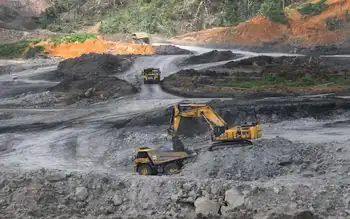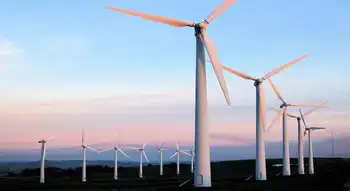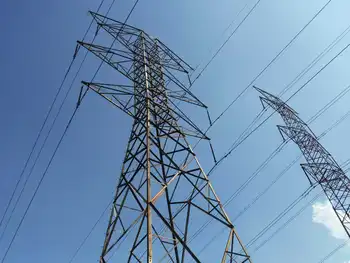This Week's Solar Flare Illuminates the Grid's Vulnerability
NEW YORK - - A massive burst of solar wind that erupted from the sun Tuesday is expected to deliver only a "glancing blow" to the Earth's vulnerable magnetic field, NASA officials said yesterday. But it will preview what some experts call a potentially existential threat to the power grids of the United States and other nations, and the populations that depend on them.
Antti Pulkkinen, who leads NASA's "Solar Shield" satellite-based detection system at the Goddard Space Flight Center, said the cloud of ionized particles from Tuesday's violent "coronal mass ejection" will largely miss Earth, giving some North American residents a glimpse of the aurora borealis, or northern lights, this weekend. "It will not be a major event [for] the power grid," he said.
However, NASA spacecraft detected a much larger eruption last weekend on the backside of the sun headed away from Earth, generating a much faster-moving cloud.
"If this event was on a collision course with the U.S., we would have had a major space weather event," Pulkkinen said. "In this regard, we got lucky."
The next peak cycle of sunspot activity is predicted for 2012-2014, bringing with it a greater risk of large geomagnetic storms that can generate powerful rogue currents in transmission lines, potentially damaging or destroying the large transformers that manage power flow over high-voltage networks.
"Geomagnetically-induced currents on system infrastructure have the potential to result in widespread tripping of key transmission lines and irreversible physical damage to large transformers," a 2009 report pdf by the North American Electric Reliability Corp. NERC and the Energy Department says.
Agreement on the seriousness of the threat, but not the solution
In the worst-case scenario, the stockpile of spare transformers would fall far short of replacement needs. Urban centers across the continent would be without power for many months or even years, until new transformers could be manufactured and delivered from Asia. The transformers are not made in the United States.
"If the solar storm of 1921, which has been termed a one-in-100-year event, were to occur today, well over 300 extra-high-voltage transformers could be damaged or destroyed, thereby interrupting power to 130 million people for a period of years," Joseph McClelland, director of the Office of Electric Reliability at the Federal Energy Regulatory Commission, said at a May 31 House Energy subcommittee hearing on the issue.
"The U.S. society and economy are so critically dependent upon the availability of electricity that a significant collapse of the grid precipitated by a major natural or man-made EMP [electro-magnetic pulse] event could result in catastrophic civilian casualties," Rep. Trent Franks R-Ariz. said at the same hearing.
The U.S. grid currently relies for its defense on warnings from NASA that would alert U.S. utilities to take actions to protect their systems. Tuesday's storm did not require a response, NERC said.
But the alerts have the effect of advice and there are no mandatory, enforceable procedures or emergency actions, NERC officials say. No comprehensive plan exists to retrofit the transmission grid with protective devices, although the Electric Power Research Institute, the industry's primary research and development organization, is developing a range of technical responses.
The threat is a top priority for FERC and NERC, their officials say, but the two organizations have sparred over the reach of new federal authority that could be created to upgrade the grid's protective equipment and defensive plans.
While the House last year passed the "GRID Act," addressing vulnerabilities of the bulk power sector to natural threats and cyber attacks, action in the Senate is tied up by conflicting bids for jurisdiction by five different committees.
Learning from a 1989 solar storm
Pulkkinen said that NASA's satellite and computer systems provide a vital early warning capability. The solar eruptions can be detected several days before the space weather strikes the Earth, and more detailed threat analysis can be generated 24 hours before an event begins, he said.
The warnings weren't available during the last major solar storm that began on March 13, 1989.
That massive impulse blacked out the entire power grid in Quebec in 92 seconds, giving operators "no time to even assess what was happening to the power system, let alone provide any meaningful human intervention," said John Kappenman, author of a January 2010 report pdf by Metatech Corp. prepared for Oak Ridge National Laboratory.
More than 80 percent of Quebec's system was back up within 11 hours, Kappenman said. But he and other experts say the challenge to the U.S. grid is more serious for several reasons.
Related News

Energy Ministry may lower coal production target as Chinese demand falls
JAKARTA - The Energy and Mineral Resources (ESDM) Ministry is considering lowering the coal production target this year as demand from China has shown a significant decline since the start of the outbreak of the novel coronavirus in the country late last year, a senior ministry official has said.
The ministry’s coal and mineral director general Bambang Gatot Ariyono said in Jakarta on March 12 that the decline in the demand had also caused a sharp drop in coal prices on the world market, which could cause the country’s miners to reduce their production.
The 2020 minerals and coal mining program and…




